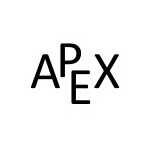1.2.1: Exercises 1.2
- Page ID
- 62179
Terms and Concepts
Exercise \(\PageIndex{1}\)
What does “the function \(f(t)\)” tell you that “the function \(f\)” does not?
- Answer
-
It tells us that \(t\) is the input for the function \(f\).
Exercise \(\PageIndex{2}\)
T/F: If \(g(x)=x^2\), then \(g(2)=g(-2)\).
- Answer
-
True
Exercise \(\PageIndex{3}\)
T/F: You can’t combine functions using both composition and quotients in the same function.
- Answer
-
False
Exercise \(\PageIndex{4}\)
T/F: In the combination \(g(f(x))\), \(f(x)\) is the input for \(g(x)\).
- Answer
-
True
Problems
Let \(f(x) = x^{3}\), \(g(x) = x + 4\), and \(h(x) = \sin (x)\). Each of exercise \(\PageIndex{5}\) – \(\PageIndex{8}\) is some combination of \(f(x)\), \(g(x)\), and \(h(x)\). Determine the type of combination and write it using function notation. For example, \(x^{3} + x + 4\) is the addition of \(f(x)\) and \(g(x)\) and can be written as \(f(x) + g(x)\).
Exercise \(\PageIndex{5}\)
\(\frac{x^3}{\sin{(x)}}\)
- Answer
-
Quotient of \(f(x)\) and \(h(x)\); \(\frac{f(x)}{h(x)}\)
Exercise \(\PageIndex{6}\)
\(\sin{(x+4)}\)
- Answer
-
Composition of \(h(x)\) with \(g(x)\); \(h(g(x))\)
Exercise \(\PageIndex{7}\)
\(\sin{(x)}+4\)
- Answer
-
Composition of \(g(x)\) with \(h(x)\); \(g(h(x))\)
Exercise \(\PageIndex{8}\)
\((2x^3)(x+4)\)
- Answer
-
Product of a scalar multiple of \(f(x)\) with \(g(x)\); \((2f(x))(g(x))\)
In exercises \(\PageIndex{9}\) – \(\PageIndex{11}\), determine the input variable of each function, any parameters of the function, and the type of function.
Exercise \(\PageIndex{9}\)
\(C(A) = \frac{k \epsilon_0 A}{d}\)
- Answer
-
The input variable is \(A\). The parameters are \(k\), \(\epsilon_0\), and \(d\). This is a monomial of degree 1.
Exercise \(\PageIndex{10}\)
\(v(t) = -9.8t + v_0\)
- Answer
-
The input variable is \(t\). The only parameter is \(v_0\). This is a polynomial of degree 1.
Exercise \(\PageIndex{11}\)
\(A(t)=P(1+\frac{r}{n})^{nt}\)
- Answer
-
The input variable is \(t\). The parameters are \(P\), \(r\), and \(n\). This is an exponential function.
In exercises \(\PageIndex{12}\) – \(\PageIndex{17}\), evaluate the given expression.
Exercise \(\PageIndex{12}\)
Given \(f(x)=2x^2\) and \(g(x)=x-b\), find \(5f(3a)-g(4)\)
- Answer
-
\(90a^2-4+b\)
Exercise \(\PageIndex{13}\)
Given \(f(x)=x^2-3\) and \(g(x)=x-b\), find \(f(y+h)-3g(5)\)
- Answer
-
\(y^2+2yh+h^2-18+3b\)
Exercise \(\PageIndex{14}\)
Given \(f(x)=5-x\) and \(g(x)=-x^4+p\), find \(f(y+h)-3g(y)\)
- Answer
-
\(5-y-h+3y^4-3p\)
Exercise \(\PageIndex{15}\)
Given \(f(\theta)=\frac{\theta+3}{\theta-2}\) and \(g(\theta)=\theta^2+4\), find \(g(f(3))\)
- Answer
-
\(40\)
Exercise \(\PageIndex{16}\)
Given \(g(x)=x^2-4\) and \(f(x)=\sqrt{x+8}\), find \(g(x+h)-2f(8)\)
- Answer
-
\(x^2+2xh+h^2-12\)
Exercise \(\PageIndex{17}\)
Given \(f(y)=y-5\) and \(g(y)=h-y^2\), find \(g(f(y))-f(g(y))\)
- Answer
-
\(10y-20\)
In exercises \(\PageIndex{18}\) – \(\PageIndex{21}\), determine the difference quotient of each of the following functions.
Exercise \(\PageIndex{18}\)
\(h(r)=2r+4\)
- Answer
-
\(2\)
Exercise \(\PageIndex{19}\)
\(g(y)=4y-7\)
- Answer
-
\(4\)
Exercise \(\PageIndex{20}\)
\(y(x)=x^2+6\)
- Answer
-
\(2x+h\)
Exercise \(\PageIndex{21}\)
\(f(t)=4t^2+x\)
- Answer
-
\(8t+4h\)


